It’s always worthwhile to talk about the merits of mixing commonly available fish. Being so readily available means that, inevitably, somebody out there wants to mix an X and a Y. And in the case of this article, the X and the Y are angelfish and betta fish.
And to keep things accurate, I want to nail down which fish I’m talking about by using their scientific names—angelfish are pterophyllum scalare—and—Siamese fighting fish or betta fish are betta splendens.
Keeping Angelfish With Betta Fish – Is It A Good Idea?
Maybe! I wish the answer to that was straightfoward. If you want to keep it super simple, and be as safe as you can, then I would say, “no”. You probably shouldn’t keep a betta fish with an angelfish.
If you find very young, small angelfish for sale, they might be able to live with the betta fish short term. But, there would be a concern for the small angelfish’s safety if you have an aggressive male betta.
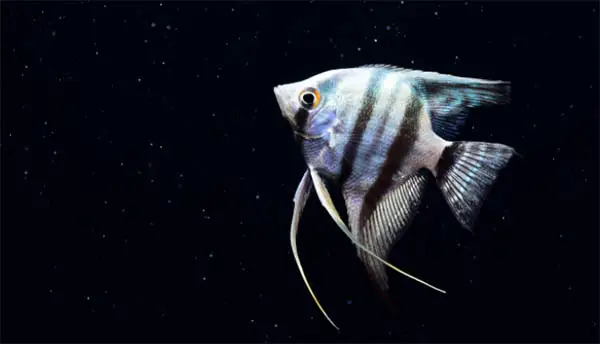
And, conversely, as the angelfish grow, you’ll have to start worrying about the betta fish. Angelfish are cichlids, and while they are docile by cichlid standards, they are still prone to relatively mild aggression and do like to peck at other fish.
So, you can imagine a slow moving male betta with trailing fins could easily fall victim to a nippy angelfish.
So, I’d probably recommend against it.
But! My Initial Answer Is “Maybe” Because I Think It COULD Work
In fishkeeping, you’ll encounter a lot of people who present their own experience or what they read five minutes ago as irrefutable facts. And, with living creatures you’ll find no such rigidity.

There are people out there breaking the “rules” of fishkeeping and having great success doing it. Some people keep oscars with frontosa (I’ve got an article about that here). While, other people run tanks with no filtration whatsoever. Some breeders stock their tanks to the max and compensate for it with daily water changes of 90%.
So, just keep an open mind as I go into some of the scenarios in which you could possibly keep betta fish with angelfish.
What Kind Of Betta Do You Want To Keep With Angelfish Anyway?
Betta splendens is one of those fish—like koi and goldfish—that has been domesticated for centuries and as such we have developed a multitude of domestic strains via selective breeding.
Long Finned Bettas With Angelfish
For example, most of the male bettas you see for sale at your local pet store are going to have long, flowing fins. They are poor candidates for mixing with angelfish. Their unnaturally long finnage slows their movement significantly and provides the angelfish with something easy to nip on.
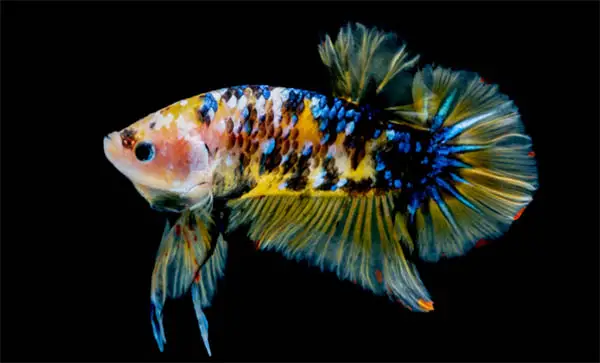
What About Female Bettas? They’ve Got Short Fins!
Having shorter fins is definitely a bonus, so keeping a female betta with angelfish would definitely be a better option than keeping a long finned male.
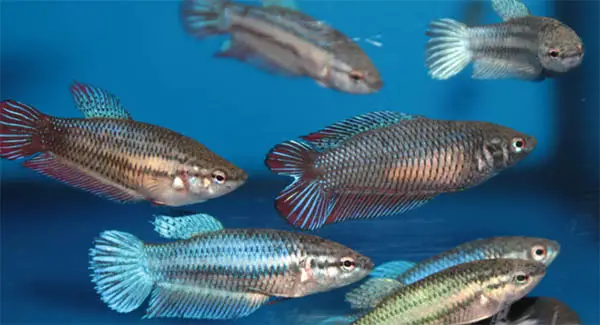
A female betta will be better able to swim away from your angelfish when they act aggressively, and their shorter fins will be less of a temptation for nipping.
Plakat Bettas Have Short Fins! Even The Males!
That’s right. In the west, what we call “plakat” bettas all have short fins (male or female).
These fish, in my opinion, are generally hardier and closer to the wild form of the fish. So, that is an added bonus other than simply the fact that their fins are shorter.
If I was going to keep a betta fish with angelfish, I’d probably opt for a plakat!
But… there’s one more option that might be even better!
The Giant Betta Is Better!
Selective breeding strikes again!
Betta breeders noticed that some of their fry grew larger than others, and began to selectively breed for size. Over generations, breeders were able to obtain significantly larger adult betta sizes.
Some giant bettas reach up to four inches in size (around ten centimeters).
Giant bettas also have short fins.
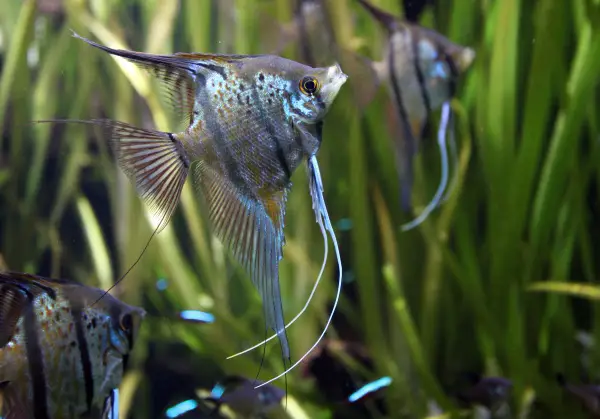
Giant bettas are a much better match, size wise, for angelfish (pictured above).
So, as you can imagine, the short fins combined with the increased size make for better angelfish tank mates. Being so much larger than your average betta fish means the angelfish are less likely to see them as targets for bullying.
Okay, I’m Heading Down To My LFS To Find A Giant Betta To Go With My Angelfish!
Hold your horses!
Picking out the right type of betta is only one piece of the puzzle. Next, you’ll need to turn your focus to providing an environment that’s conducive to harmony!
Tank Size For Keeping Betta With Angelfish
It goes without saying that bigger is better. But, when it comes to keeping more aggressive fish it becomes even more important. While angelfish and betta fish aren’t the nastiest fish out there, they definitely can fuss and fight with each other. Therefore, you want a bigger tank to give them space to avoid those quarrelsome confrontations.
You should also consider the height of the tank, taller (if possible) is better. This is because, generally speaking, angelfish and bettas tend to occupy different areas of the water column.
While it’s true that both bettas and angelfish will move up and down in the water, the betta prefers to be near the surface and your angelfish will prefer to occupy the mid-water.
Hiding Spots
You’re going to need to use the environment you keep your fish in to provide them with places to escape aggression. By that I mean, your fish will need hiding spots.
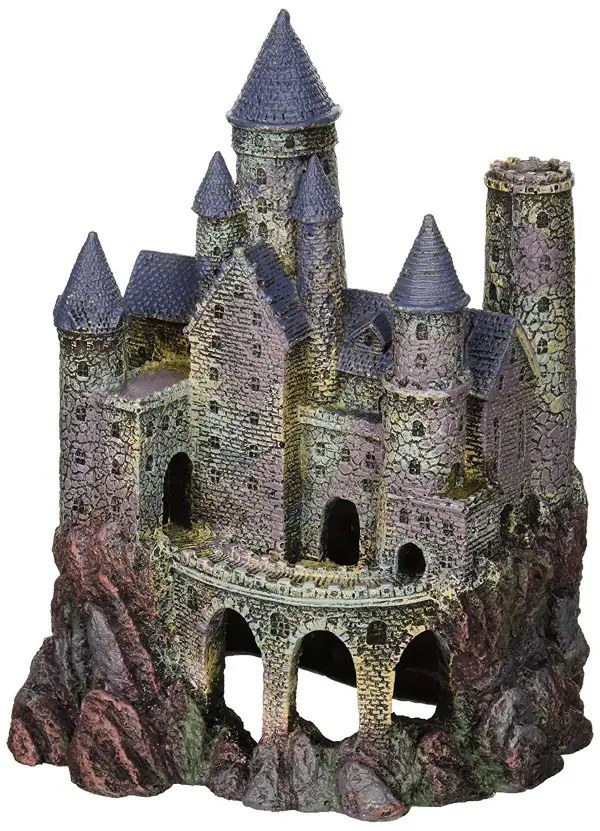
But, calling them “hiding spots” is a bit of an oversimplification. Because, placing a castle you bought from the pet store in the center of your aquarium creates a “hiding spot” inside, but realistically your fish are not going to use it.
Line Of Sight
It’s better for us to think about “line of sight” and how to break it! With fish, even the most intelligent ones, out of sight usually means out of mind.
Therefore, the ideal tank decorations will be tall and broad, allowing fish to quickly dart behind them if they become a victim of bullying.
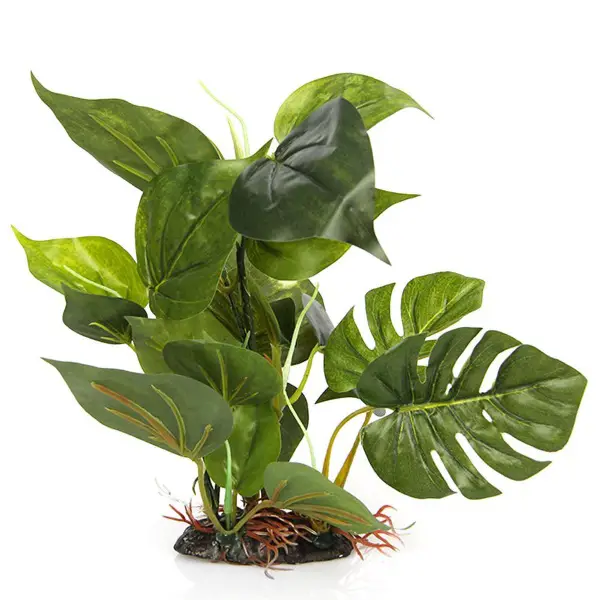
Tall plants with broad leaves are an excellent option, live or plastic is fine! As are pieces of driftwood positioned vertically.
Make Your Betta Feel At Home!
In my experience, there’s no better way to make a betta feel at home than to provide it with floating plants and trailing roots.
Floating plants are some of the easiest to grow because they access their carbon dioxide from the air rather than the water column. So if you grab some duckweed or some Amazon frogbit, it won’t be long before the entire surface of your tank is full of the stuff.
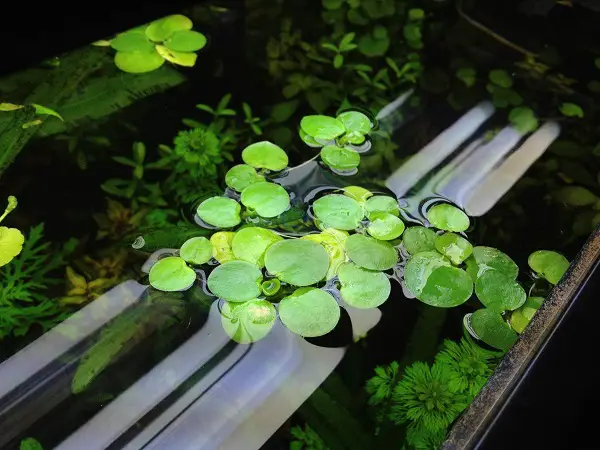
With lots of surface cover like that, your betta will feel safe and sound near the top of the tank and will be less likely to interact with your angelfish lower down in the midwater region.
Oh, Man! I Gotta Rest Up!
If you’ve kept betta fish before, you might have noticed how they like to pick a spot and rest on it?
Therefore, this is something you need to keep in mind when planning your setup. Ideally, you should provide your betta with resting spots higher up in the water column so as to avoid interaction with the angelfish.
A static fish is an easy fish to peck at.
So, my advice is to consider buying one of the plastic leaves with a suction cup attached that are designed to provide resting spots for betta fish. Place this near the surface of the water and your betta will be able to enjoy a peaceful rest away from the attentions of its angelfish tank mates.

My Angelfish Paired Off And Want To Breed!
Breeding cichlids are the bane of any harmonious community tank.
Once a pair of cichlids have paired up, angelfish included, they will find a nesting site, lay eggs, and then defend them like their lives depended on it.
If this happens in your community tank, it isn’t necessarily the end of the world for your betta or other fish. But, it is definitely something to keep an eye on.
Without proper hiding places—i.e. breaks in the line of sight—the angelfish parents will likely harass the other tank mates.
My Betta Wants To Breed!
And your betta might find himself in the mood too. If you keep a male betta and he’s happy and healthy, then there’s every chance he might build a bubble nest in the hopes that a female will come his way.
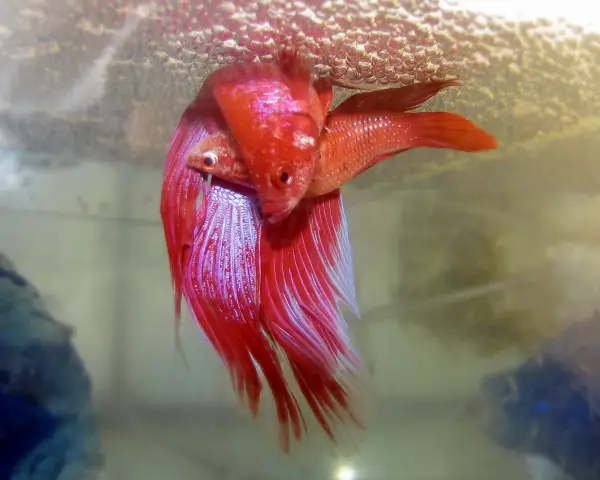
Betta fish breeding.
Like cichlids, the male betta will defend his nest aggressively. It’s something to be aware of!
Conclusion
In conclusion, I would like to reiterate my opening assertion that you probably shouldn’t keep betta and angelfish together. It presents you with a number of challenges as a fishkeeper. And, yes, while those challenges can be overcome, sometimes it’s easier to just take the path of least resistance.
Picture yourself heading down to the pet store and grabbing yourself a new aquarium—maybe they’re on sale?—and setting up excellent (but separate) homes for both your angelfish and your betta.


